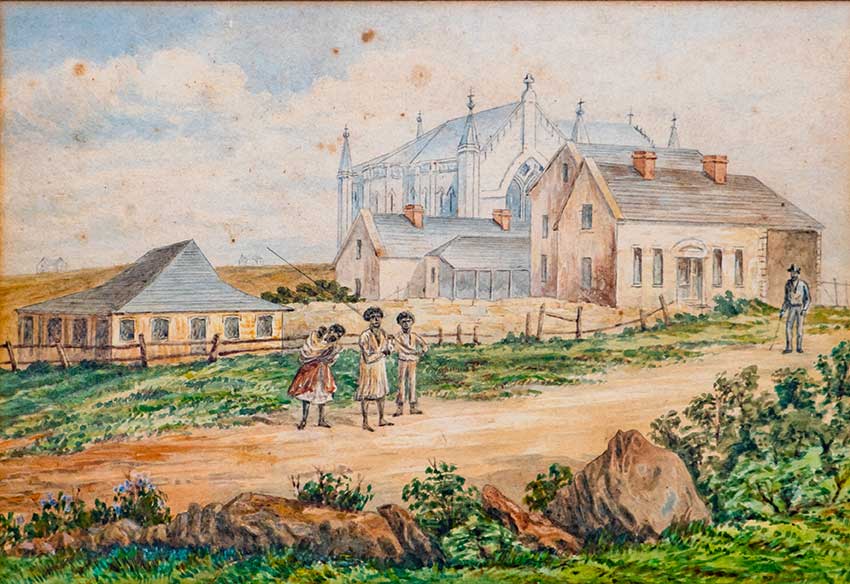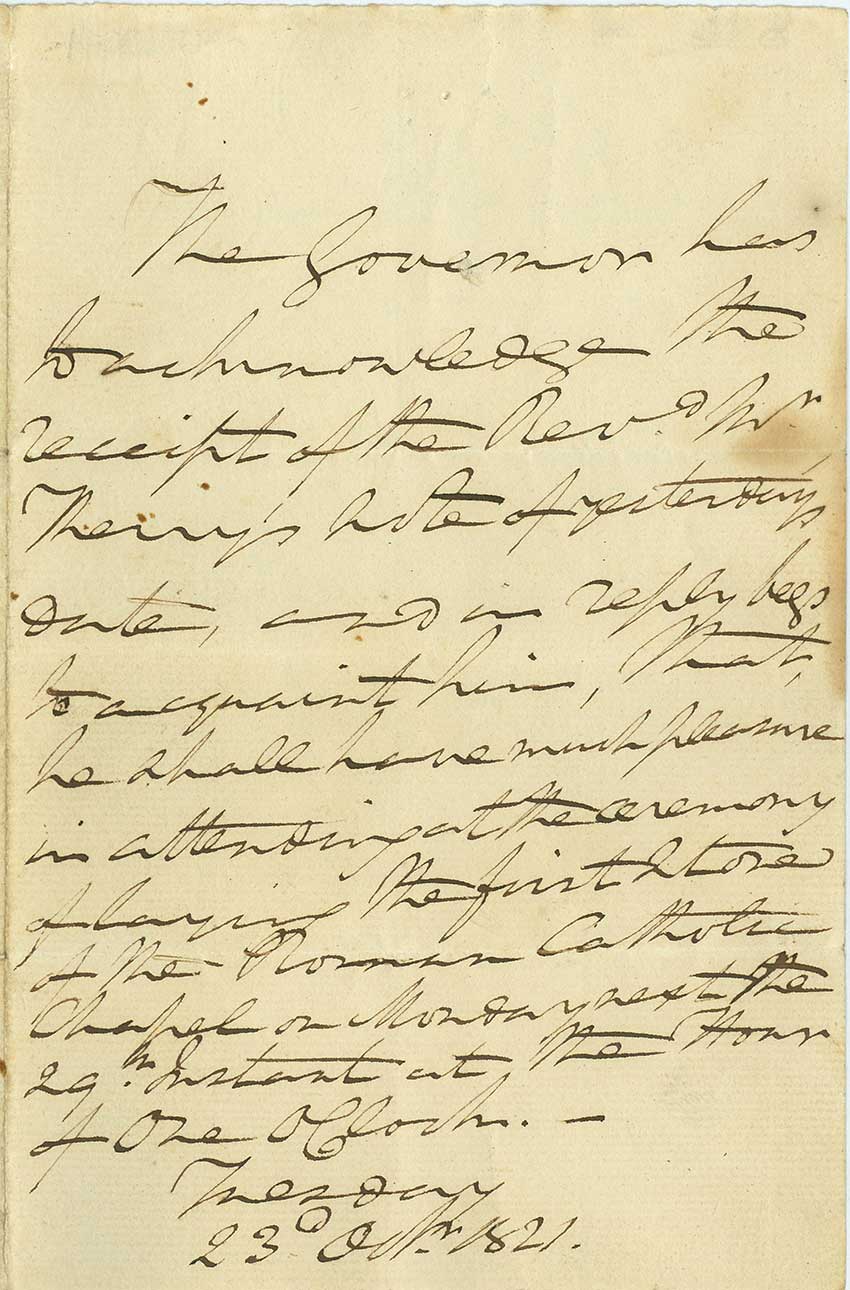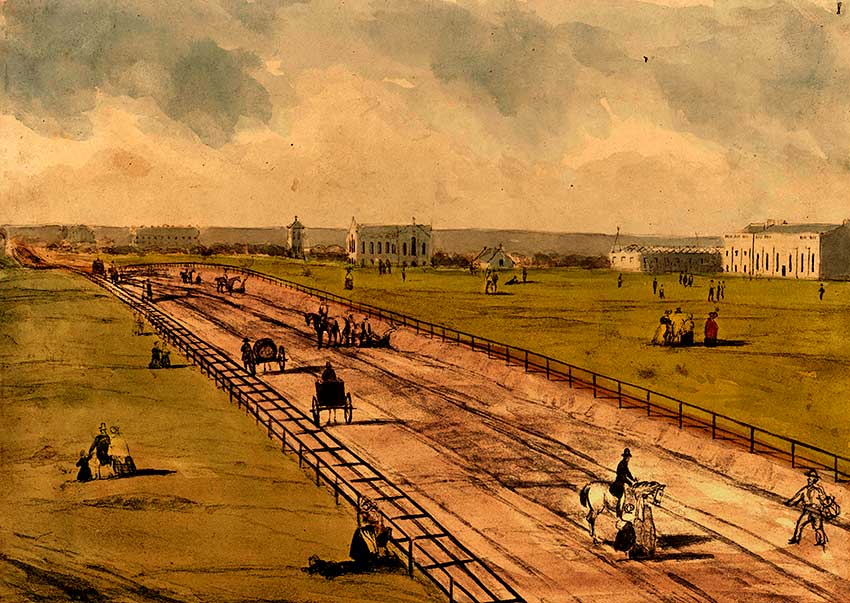
The European population of the colony of New South Wales in 1821 was about 30,000. Most lived in Sydney and nearby towns and rural areas. The Census of 1828 showed 30 per cent were Catholics, and a similar proportion can be inferred for 1821.
Who were those pioneers of the Australian Church?
They were overwhelmingly Irish and poor. Many were still convicts serving the long sentences that had earned them transportation across the globe. Some worked in gangs on government works but many were assigned as servants in individual households and farms.
The rest were mostly ex-convicts who had served their sentences and now were establishing themselves in menial occupations. The adults among both classes were mostly male, as only a small proportion of convicts sent to Australia were women. A first generation of children was growing up and their education was an urgent task.
There was only one priest, the energetic but sometimes irascible Father John Joseph Therry, Two priests had arrived with official recognition in 1820 but the other, Father Philip Conolly, soon moved to Van Diemen’s Land (Tasmania). Father Therry was left and he served the whole colony by himself, from Sydney to the remotest bush, for years.
The “men of ‘98”
A leading position in the Catholic community was occupied by the “men of ‘98”, a group of ex-convicts who had been transported for alleged involvement in the Irish rebellion of 1798. By 1821 they had long served their sentences and in many cases had become leading citizens.
Some of them took leadership of the well-organised lay Catholic community that awaited Fr Therry when he stepped ashore – they formed nearly all of the committee that undertook the appeal for the first St Mary’s Church after Fr Therry’s arrival. Most prominent as a religious leader was James Dempsey, a supervisor of government building works, in whose house in Kent Street the Catholic community met regularly to pray.
Also significant was James Meehan, the deputy government surveyor. His official work led to many land grants to Catholics in the area beyond Campbelltown, which eventually led to a high proportion of Catholic settlers in the Goulburn and Riverina areas. His role in acquiring the site of St Mary’s is described in an accompanying article in this edition.
Joining them as a lay leader was Catherine Fitzpatrick, a schoolteacher who had come to Sydney with her convict husband. She trained a choir which later developed into St Mary’s Cathedral Choir. The Choir is older than not only the Cathedral itself but the first church in Sydney.
Although the early Catholics were overwhelmingly Irish, multiculturalism has been part of the story from the start. The French Royalist exile, Gabriel Louis Marie Huon de Kerillau, “a Catholic gentleman and scholar”, was employed as tutor to the sons of John and Elizabeth Macarthur, the colony’s leading citizens. “Louis Peter, a native of India and Roman Catholic” was recorded as a witness in a legal case in 1810. In 1814 a convict, Angelo le Rosse, was accompanied to the gallows by a lay Catholic appointed in place of a priest, as there were no priests in the colony.
As far as is known, there were no indigenous Catholics in 1821 (although in 1827 the second chaplain, Fr Power, baptised an Aboriginal man on the scaffold).

Tuesday 23 October 1821” Image: Archives of the Archdiocese of Sydney
Protestant attitudes
The attitudes of the Protestant population to their Catholic fellows varied widely.
The Reverend Samuel Marsden, “the flogging parson”, believed that Irish Catholics were ignorant and savage and their children needed to be forcibly educated in Protestantism. On the other hand, there was considerable Protestant goodwill towards the building of the first St Mary’s Church, to the extent that a special committee was formed to handle Protestant donations.
Governor Macquarie, though he had earlier believed that religious uniformity was better for public order, accepted policy from London that Catholic priests be sent to the colony and officially recognised, including payment of a salary. His list of instructions of 1820 to the newly-arrived Fathers Therry and Conolly is welcoming, but cautions them that they are permitted to marry Roman Catholics only and must not proselytise. Father Therry treated the Governor’s “instructions” as loose guidelines to be ignored when pastoral necessity demanded it.
Individual voices
It is hard to hear the individual voices of the earliest Catholics, as most of them can be known only through basic convict and census records and the occasional newspaper articles. They have not left writings of their own. However, there are just a few exceptions, where we can hear from them directly. One is the merchant Michael Hayes, one of the “men of ‘98” and the subject of Vivienne Keely’s biography
He prospered for a time in the 1810s and several letters of his give insights into the difficulties of business and his family life. His letters to his brother, a priest in Rome, were significant in bringing attention to the needs of Catholics in Sydney. Another source is the collection of notes and letters received by Father Therry. The State Library of New South Wales website has a page displaying a number of urgent and poignant requests sent to him. One says:
Sydney Gaol March the 16th 1822
Revd,
Mr. Terry we beg your assistance at the Last Day we are anxious to see you in hope it may Reconcile us, for god sake come, as we hope in the almighty god we are to Die in a few Days.
Francis Murphy
James Fallen

Image: Mitchell Library, State Library of NSW.
It is a reminder of the harsh times and desperate situations of many in early Sydney.
The most extensive eyewitness account is that written in old age by Columbus Fitzpatrick, Catherine’s son, who remembered the lay community of the late 1810s.
He was an altar boy to Fr Therry at Governor Macquarie’s laying of the foundation stone of the first St Mary’s on 29 October 1821. He recalled holding the ceremonial silver trowel before Fr Therry handed it to the Governor, and claimed to remember a good deal of the inscription on it. Remarkably, his account can be checked – he has it almost right – because the trowel still exists. It is held by the State Library.
At the time of the centenary celebrations of the colony in 1888, the Sydney Catholic newspaper, the Freeman’s Journal, was able to interview the aged but alert Ambrose Fitzpatrick, the younger brother of Columbus. He was by then one of the last persons alive able to remember the time before 1820.
He testified to the reservation of the Blessed Sacrament in Dempsey’s house where it was left by Fr Jeremiah O’Flynn, who had been expelled by Governor Macquarie in 1818 after arriving in Sydney without permission.
There is much still to discover about the early years of Catholicism in the colony. Dr Damian Gleeson, the State Library of New South Wales Australian Religious History Fellow for 2022, is engaged on Fr Therry’s papers and is finding many yet untold stories of our Irish forebears.
Many well-researched and beautifully illustrated stories from the early days are available on Michael Sternbeck’s marvellous In Diebus Illis blog. We pray for the souls of, especially, the anonymous pioneers who founded our Australian Catholic community.
Related
